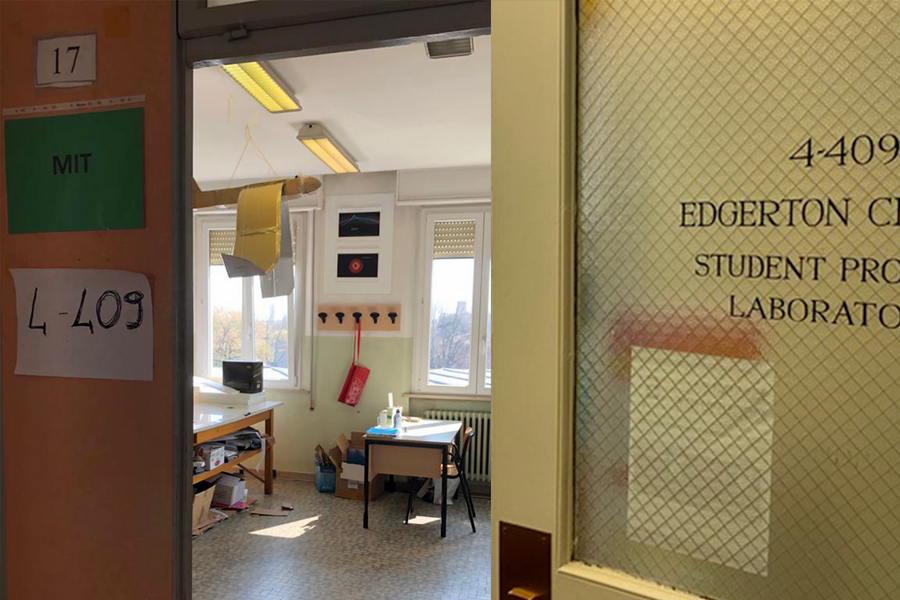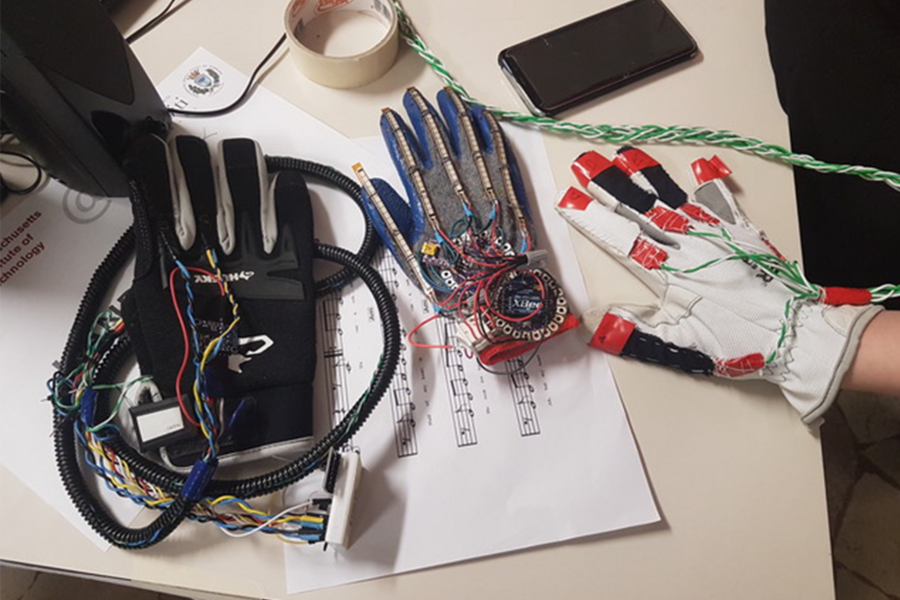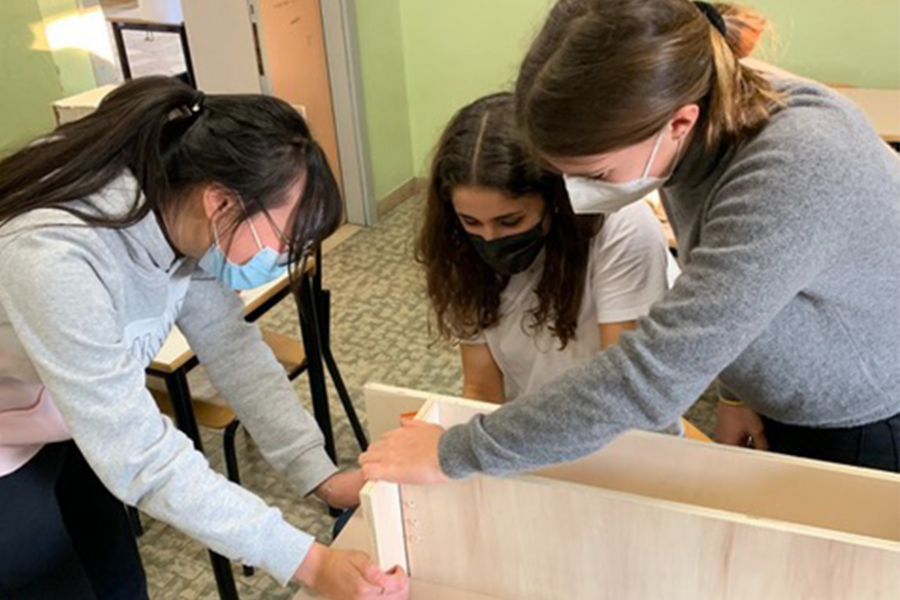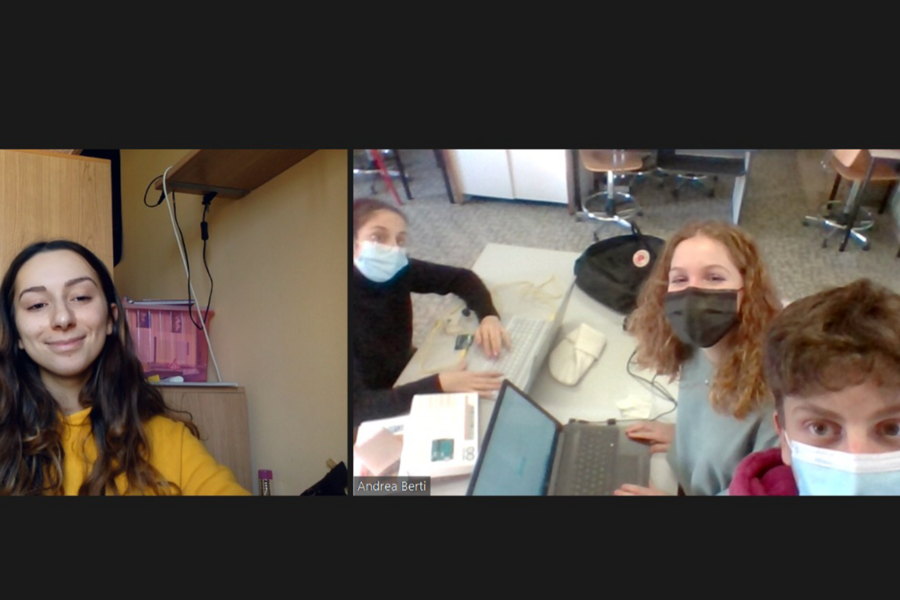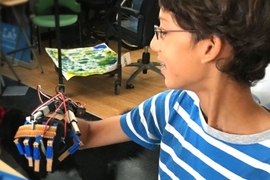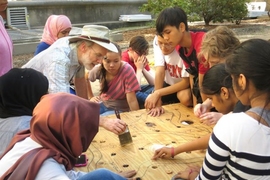A pendulum wave is a series of weights, each suspended by a string a little longer than the last. The weights swing in a wave, like a snake slithering through grass. It’s a work of kinetic art and a demonstration of trigonometry, and it can also be a magic wand for catalyzing interest in physics. This is exactly what happened at Roiti High School in Ferrara, Italy, back in 2018.
That’s when Ed Moriarty, a technical instructor with MIT’s Edgerton Center, helped Roiti teachers set up a club in which students design and construct elaborate machines like amphibious hovercrafts, dancing pianos, and water-powered rockets. This hands-on approach to learning is unlike the lectures, worksheets, and tests found in most Roiti classes. Students say it’s shifted their view of education, it’s helped close the gender gap in science, and it’s making them rethink their career plans.
The project started after Roiti physics and math teacher Cristina Trevissoi visited Moriarty at MIT while he was running “The Saturday Thing.” Every weekend (pre-pandemic), he opened up the center’s Student Project Lab for anyone who wanted to build stuff. A lot of high school students dropped by, but graduate students, retired people, and even 5-year-olds would jump in. Everyone worked together to create and have fun.
“I realized that concepts in physics aren’t just related to formulas,” says Trevissoi. “They’re also related to experiences.” She decided to start a similar project in Ferrara.
Trevissoi invited Moriarty to help her, so he headed off to Ferrara to run a one-week workshop along with five other current or past participants of The Saturday Thing. Although many of the 25 Roiti students they worked with had never used a screwdriver, the students were so motivated by the idea of building a pendulum wave that after a few days, they were working without help from their teachers or the MIT group. In fact, Moriarty was napping and the rest of the MIT crew was touring a Lamborgini factory when the students got the wave working.
The project lived on as an after-school club called Hands on Physics Education, or HoPE. Around 50 students participate each year, and their projects have included a harp with lasers instead of strings, a motorized skateboard, and a glove that plays music when the wearer bends their fingers. The glove attracted the attention of physiotherapy students from the University of Ferrara, who are interested in how the glove might be useful to people with disabilities.
Not everyone was a fan of HoPE. Roiti student Eleanora Signorini says, “When this project came into our school, it was a shock for everyone. Our school is pretty traditional, and a lot of the teachers don’t like changes.”
But HoPE is changing attitudes toward science, despite some resistance. Signorini, for example, says that before she participated, she was thinking of studying fashion management after high school, or maybe becoming a stylist. “Now,” she says, “I’m thinking about a career in biomedical engineering.” Many girls are poised to follow Signorini’s lead — only two out of the 25 students in the first workshop were girls, but this year the program is about equally split between boys and girls.
Some students who were already considering careers in science say that HoPE has helped them clarify their career goals. Jacopo Boaretto has always enjoyed computer science, and after working on the programming side of a flying machine, he says, “I think it’s really what I want to do with my life.”
“It makes you gain so much confidence in yourself,” says student Liz Sciannaca, who hopes to be accepted to a competitive veterinary program after high school.
The Saturday Thing’s approach is spreading, and a similar program recently started in Barcelona. Behind it all is one simple message: Physics isn’t just about books and tests. It’s about the magic in our world.

